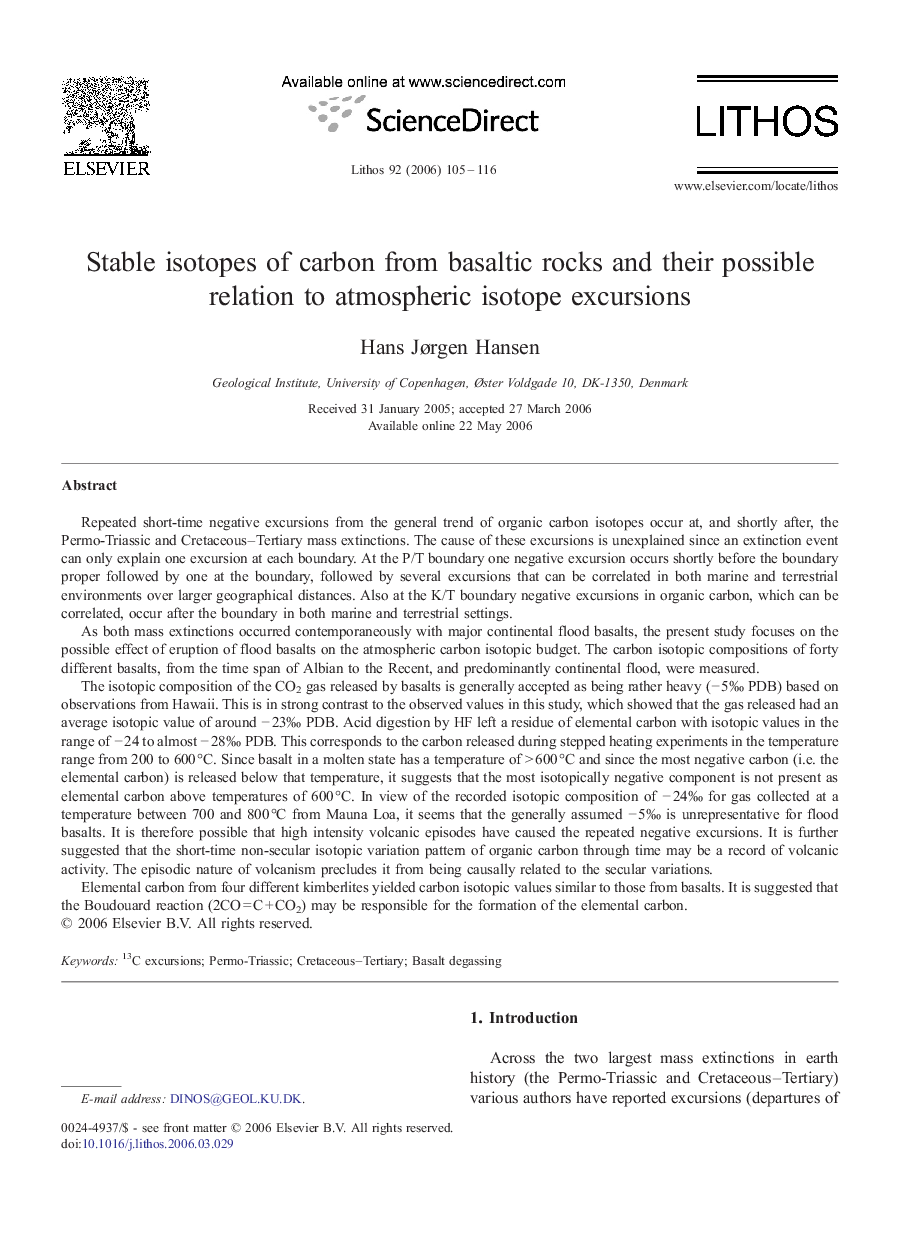| کد مقاله | کد نشریه | سال انتشار | مقاله انگلیسی | نسخه تمام متن |
|---|---|---|---|---|
| 4718015 | 1638775 | 2006 | 12 صفحه PDF | دانلود رایگان |

Repeated short-time negative excursions from the general trend of organic carbon isotopes occur at, and shortly after, the Permo-Triassic and Cretaceous–Tertiary mass extinctions. The cause of these excursions is unexplained since an extinction event can only explain one excursion at each boundary. At the P/T boundary one negative excursion occurs shortly before the boundary proper followed by one at the boundary, followed by several excursions that can be correlated in both marine and terrestrial environments over larger geographical distances. Also at the K/T boundary negative excursions in organic carbon, which can be correlated, occur after the boundary in both marine and terrestrial settings.As both mass extinctions occurred contemporaneously with major continental flood basalts, the present study focuses on the possible effect of eruption of flood basalts on the atmospheric carbon isotopic budget. The carbon isotopic compositions of forty different basalts, from the time span of Albian to the Recent, and predominantly continental flood, were measured.The isotopic composition of the CO2 gas released by basalts is generally accepted as being rather heavy (− 5‰ PDB) based on observations from Hawaii. This is in strong contrast to the observed values in this study, which showed that the gas released had an average isotopic value of around − 23‰ PDB. Acid digestion by HF left a residue of elemental carbon with isotopic values in the range of − 24 to almost − 28‰ PDB. This corresponds to the carbon released during stepped heating experiments in the temperature range from 200 to 600 °C. Since basalt in a molten state has a temperature of > 600 °C and since the most negative carbon (i.e. the elemental carbon) is released below that temperature, it suggests that the most isotopically negative component is not present as elemental carbon above temperatures of 600 °C. In view of the recorded isotopic composition of − 24‰ for gas collected at a temperature between 700 and 800 °C from Mauna Loa, it seems that the generally assumed − 5‰ is unrepresentative for flood basalts. It is therefore possible that high intensity volcanic episodes have caused the repeated negative excursions. It is further suggested that the short-time non-secular isotopic variation pattern of organic carbon through time may be a record of volcanic activity. The episodic nature of volcanism precludes it from being causally related to the secular variations.Elemental carbon from four different kimberlites yielded carbon isotopic values similar to those from basalts. It is suggested that the Boudouard reaction (2CO = C + CO2) may be responsible for the formation of the elemental carbon.
Journal: Lithos - Volume 92, Issues 1–2, November 2006, Pages 105–116